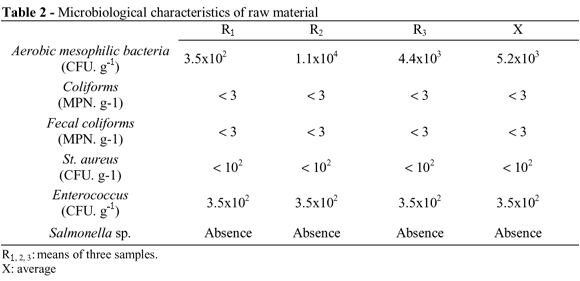Lactobacillus sakei 2a is a bacteriocin producer strain. In this study, it's effects as a starter culture in the curing process of sardine (Sardinella brasiliensis) fillets were studied at different concentrations of NaCl (2, 4, 6%) and glucose (2, 4%). After 21 days of fermentation, the spoilage microorganisms population reached 9.7 Log10 CFU g-1 corresponding to 6% NaCl and 4% glucose. With no addition of glucose and starter culture, sardine fillets began spoilage 72 hours after fermentation, even when 6% NaCl was used. Little differences were observed in lactic acid production when 2 and 4% glucose were added, since total acidity was 1.32 and 1.34% respectively, the experiments with 6% NaCl presented the best results. Initial pH of sardine fillets was 6.0 and after 21 days pH values were 3.8, 3.9 and 4.0 for the experiments with 2, 4 and 6% NaCl respectively. This could have been due to the inhibitory properties of NaCl over the spoilage microorganisms. After 21 days of the fermentation, the levels of lactic acid bacteria (LAB) were 14.5 Log10 CFU.g-1.
Sardinella brasiliensis; Lactobacillus sakei 2a; fermented fish






